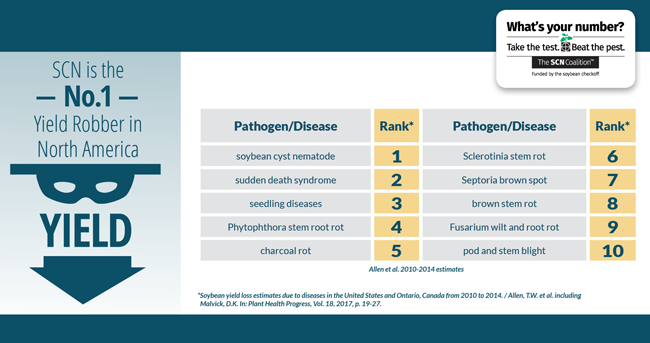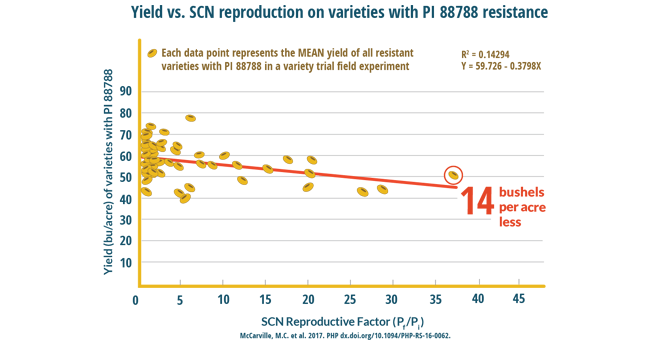ILSOYADVISOR POST
Understand and Manage SCN: 4 Proven Tips
Two decades ago, farmers had a problem with Soybean Cyst Nematodes invading their fields, taking over and causing major yield losses. But soon after, SCN resistant varieties were introduced and the problem seemed to be solved. As most farmers went back to managing their crops and thinking about SCN as a backburner issue, the nematode was slowly working behind the scenes, developing resistance and, once again, wreaking havoc on soybean fields across the country.

Thankfully, dedicated researchers have been watching for this all along. That’s why the SCN Coalition is back, with research-based tips to manage and beat SCN.
To manage SCN, it’s important to understand what this nematode is and how it behaves.
The soybean cyst nematode lifecycle can be completed in as little as 24 days during the growing season, which means anywhere from 3 – 6 generations of nematodes can strike a single crop each year—that adds up to more than 40,000 nematode eggs. This chart shows the SCN lifecycle and why early management is so important.
Understanding the lifecycle has been key to researchers homing in on studying SCN resistance.
Nematologist Greg Tylka has been studying SCN at Iowa State University since 1990. His research team documented steady increases in SCN reproduction on soybean varieties with PI 88788 SCN resistance in Iowa farm fields—and accompanying yield decreases—since 2001. University researchers across the country report a similar trend of increased SCN reproduction on PI 88788.
Unfortunately, almost all SCN-resistant varieties available nationwide have PI 88788 as their source of resistance. That’s why it’s going to take active management to drive your SCN numbers down and raise your yield potential up. As SCN reproduction increases, yields decrease by as much as 14 bushels per acre.

The good news is, you can beat SCN. The SCN coalition has developed a list of four research-based recommendations for farmers to actively manage SCN:
- Test your fields and know your numbers.
- Rotate resistant varieties.
- Rotate to non-host crops.
- Consider using a seed treatment nematicide.
This document offers helpful tips on how to actively scout for SCN and collect soil samples. For more resources, expert help and to hear from other farmers managing for SCN visit TheSCNCoalition.com





Comments
Add new comment